38 food labels serving size
How to Read Serving Sizes on Nutrition Labels - Lark A serving size is a measured amount of food (such as a tablespoon or a fraction like 1/8th) that is the "Nutrition Facts" found on the back of food. A single portion can contain multiple servings. This is where reading the nutritional label on the back of food becomes important. Federal Register :: Food Labeling: Serving Sizes of Foods That Can ... Start Preamble Start Printed Page 34000 AGENCY: Food and Drug Administration, HHS. ACTION: Final rule. SUMMARY: The Food and Drug Administration (FDA or we) is issuing a final rule to define a single-serving container; require dual-column labeling for certain containers; update, modify, and establish several reference amounts customarily consumed (RACCs); amend the label serving size for ...
Reading Food Labels (for Parents) - Nemours KidsHealth Serving size is based on the amount that people typically eat. All nutritional information on the label is based on the serving size. So if a serving size is 2 cookies and you eat 4 cookies — which would be 2 servings — you need to double all the nutrition information. The number of servings per container tells you how many serving sizes ...
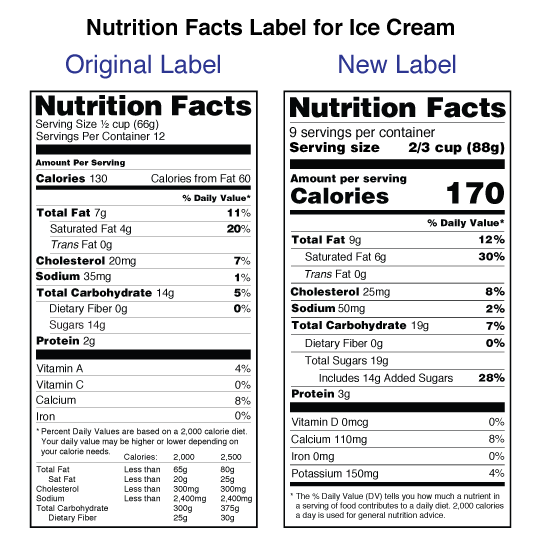
Food labels serving size
Why Are Serving Sizes on Nutrition Labels So Small? R. F. of Anna, Tex., writes: The serving sizes on the nutrition labels for some foods are unrealistically small, especially for foods high in fat, sugar, or How to Determine Serving Size - LabelCalc 2. Use your RACC to determine serving size: Portion out your product according to the RACC (i.e. weigh out 115 grams of your cereal). Then, measure it in cups, pieces, or as a fraction of the package in order to find the serving size in familiar units. Cups: Take the 115 grams of cereal and measure it in a measuring cup. This value will appear ... Food labelling changes - Canada.ca Changes to the serving size. Learn about the changes to serving sizes which will make it easier to compare similar prepackaged foods when using the nutrition facts table. Changes to the information on sugars. Learn how to use information on the food label to better understand the amount of sugars in your food. Changes to information on sweeteners
Food labels serving size. Understanding Food Labels | Extension | West Virginia University The % Daily Value helps consumers determine whether a serving of food is high or low in a nutrient. It is a good, quick guide. As a general rule, 20% or more of a nutrient is high and 5% or less is low. For example, if the Total Fat is 5% or less, that's great - it means it is low in fat. If the Total Fat is 21%, that is not good - it ... Guidance for Industry: Food Labeling: Serving Sizes of Foods That Can ... Guidance for Industry: Food Labeling: Serving Sizes of Foods That Can Reasonably Be Consumed At One Eating Occasion; Dual-Column Labeling; Updating, Modifying, and Establishing Certain... My Food Label: Determining the Serving Size - ReciPal Thus, our serving size should be listed as "1 cookie (40 grams)" or "1 piece (40 grams)". If our average cookie is 60 grams, we show it as "1/2 cookie (30 grams)". And if an average cookie is 10 grams, we list it as "3 cookies (30 grams)". Gaming the Rules A lot of companies game the system and actually use the FDA guidelines to their advantage. Suggested Servings from Each Food Group - American Heart Association Whole grain rather than refined grain products. Six (6) servings of grains per day. Examples of one serving of grains: One slice bread. One small tortilla. 1 cup ready-to-eat cereal flakes. 1 ounce (⅛ cup) uncooked pasta or rice. ½ cup cooked rice, pasta or cereal. 3 cups popped popcorn.
Serving sizes on junk foods labels are misleading For junk food, a single serve is recommended to be 600kj. 2. While a manufacturer is required to state a serving size and associated nutritional information, the study found huge variations as to how much a single serving size actually is, and a single serve of many products provided more than 600kj. Serving Size vs Portion Size Is There a Difference 18.12.2018 · Serving size is a standardized amount of food. It may be used to quantify recommended amounts, as is the case with the MyPlate food groups, or represent quantities that people typically consume on a Nutrition Facts label. Portion size is the amount of a food you choose to eat — which may be more or less than a serving. How to Read Food Labels Without Being Tricked - Healthline 19.08.2020 · Many people are unaware of this serving size scheme, assuming that the entire container is a single serving, when in truth it may consist of two, three, or more servings. Activity: Food Labels and Serving Sizes - DocsLib Read aloud the directions at the top of the Food Labels and Serving Sizes handout and instruct participants to fill out the front page of the handout based on the amount of food they would each normally eat versus the recommended serving size. 4. Using the copies of Nutrition Facts labels of various foods, have participants fill in the ...
Serving sizes and reference amounts - Information within the … The serving size is a quantity of food that can be reasonably consumed at a single eating occasion [item 1 of the Table to B.01.401, FDR]. A serving size is based on the food as offered for sale. However, for specific forms of coffee (whole or ground beans and pods) and tea (dry loose leaves, bags and pods), the serving size is based on a ... Food Label Serving Sizes Manipulation - Truthful Nutrition Values? It is a better option than relying on inaccurate food labels. There are a few guidelines that have been developed through experience to help consumers in comparing serving sizes, some of them are as listed below: i. The size of 3 ounces of meat is equivalent to a deck of cards. ii. The quantity of a cup of rice is equivalent to half a baseball. How To Read Food and Beverage Labels - National Institute on Aging The serving size on the label is based on the amount of food that people may typically eat at one time and is not a recommendation of how much to eat. Read more about serving and portion sizes. The remainder of the label information is usually based on one serving of the food or beverage (see Food Label A). Understanding food labels - Canada.ca Find information on food labels and how to understand them. Learn about nutrition facts tables, serving size, list of ingredients, % daily value and nutrition claims.
How to Understand and Use the Nutrition Facts Label | FDA - U.S. Food ... Pay attention to the serving size, especially how many servings there are in the food package. For example, you might ask yourself if you are consuming ½ serving, 1 serving, or more. In...
6 Free Printable Food Labels Worksheet & Different Types Serving Size Label Is the serving size, which indicates how much food equals one serving size - for example, it might be 1 cup or 1/2 cup or 1 ounce for a beverage- and it also lists how many servings are in a package. Nutrition Facts Label
Industry Resources on the Changes to the Nutrition Facts Label As explained in the Serving Size Final Rule, nutrient content claims typically must be based on the RACC, but in some cases they must be based on both the RACC and a per-label serving size (81 FR ...
No, serving sizes on food labels don't tell us how much we should eat To make it even more confusing, in the same brand of rice, a 450g family pack could be labelled as having four serves, with each serve 112g. That's 10% smaller than the serving size in the...
Food Serving Sizes Have a Reality Check | FDA In some cases, the reference amounts used to set serving sizes are smaller. Today's individually packaged yogurts more often come in 6-ounce containers, versus the previous 8-ounce ones. The...
Serving size - Canada.ca Serving size is not necessarily the suggested quantity of food you should eat. The serving size tells you the quantity of food used to calculate the numbers in the nutrition facts table. By checking a product's serving size, you can: understand how much of a nutrient you are eating; compare calories and nutrients between 2 similar packaged food ...
Understanding the FDA Food Label: The Serving Size The serving size is located at the top of the FDA food label. It not only tells you the amount of a single serving, but it will tell you how many servings are in the container. For example, the label on a can of pears may note that the serving size is ½ cup and that the can contains three servings. Serving Size vs. Portion Size. The serving ...
Food Labels | CDC - Centers for Disease Control and Prevention All the numbers on this label are for a 2/3-cup serving. This package has 8 servings. If you eat the whole thing, you are eating 8 times the amount of calories, carbs, fat, etc., shown on the label. Total Carbohydrate shows you types of carbs in the food, including sugar and fiber. Choose foods with more fiber, vitamins, and minerals.
Serving Size on the New Nutrition Facts Label | FDA - U.S. Food … First, look at the serving size and the number of servings per container, which are at the top of the label. The serving size is shown as a common household measure that is appropriate to...
Serving Sizes and Other Food Label Secrets - DSM The serving size is usually the first thing listed. It should tell you two things: what the size is of one serving, and how many servings are in the container. This is really useful when it comes to figuring out how much to eat. Hieronymus and Carlisle give these sample food labels for packaged pizzas.
Nutrition Facts table formats - Food labels - Canadian Food … Note that in these cases, the serving size declaration is modified to include a declaration for the food as prepared in addition to the food as sold. The serving size for the "Prepared" food includes the household measure only, not the metric measure. For drink crystals to be prepared with added water, for example, the serving size may be declared as "Per 1 tbsp (2 g) (about 1 cup prepared ...
Nutrition Labels: Who Determines What a Serving Size Is? - MEL Magazine Ice cream nutrition labels have been modified accordingly, with a pint of Ben & Jerry's now defined as three servings instead of four. Soda, meanwhile, has increasingly been sold in larger containers — from a 12-ounce can to 20-ounce bottles. Nutrition labels now better reflect those increases, too.
Serving size on food label - HealthyLife | WeRIndia In a food label the projected serving size could be misleading and can be sneaky! The size of package or packaging used to decide how much people should consume. For example, if you finished a bag of potato chips and see the label, most time you would have consumed more fat, calories and servings than that mentioned. Another example is drinking ...
Reading food labels: Tips if you have diabetes - Mayo Clinic 25.06.2021 · The serving sizes listed on food labels may be different from the serving sizes in your meal plan. If you eat twice the serving size listed on the label, you also double the calories, fat, carbohydrates, protein, sodium and other ingredients. Consider your daily calorie goals. The same goes for the Daily Value listed on food labels. This ...
Compare Serving Sizes - Easy Food Health Decisions | Eatiquette For cereals alone, you even see everything from cups to ounces and pieces to slices. Take a serving of cereal for example. These are just some of the serving sizes across brands of cereals in the Eatiquette app: Anything from ¼ cup to 1⅔ cup. A range of 5 to up to 52 biscuits. A bowl, a box, a container, various numbers of pieces ...
PDF Activity: Food Labels and Serving Sizes - UNC Gillings School of Global ... 3. Read aloud the directions at the top of the Food Labels and Serving Sizes handout and instruct participants to fill out the front page of the handout based on the amount of food they would each normally eat versus the recommended serving size. 4. Using the copies of Nutrition Facts labels of various foods, have participants fill in the
Larger Serving Sizes On Food Labels May Encourage Us to Eat Less - HuffPost Let's hope that this occurs in reality if FDA does, in fact, increase the serving sizes on food labels (which the agency proposed doing for nearly 17% of packaged foods). For example, FDA is proposing to increase the serving size of ice cream from ½ cup to 1 cup. Rather than view the 1 cup serving as a recommendation, I hope that instead ...
Food labelling changes - Canada.ca Changes to the serving size. Learn about the changes to serving sizes which will make it easier to compare similar prepackaged foods when using the nutrition facts table. Changes to the information on sugars. Learn how to use information on the food label to better understand the amount of sugars in your food. Changes to information on sweeteners
How to Determine Serving Size - LabelCalc 2. Use your RACC to determine serving size: Portion out your product according to the RACC (i.e. weigh out 115 grams of your cereal). Then, measure it in cups, pieces, or as a fraction of the package in order to find the serving size in familiar units. Cups: Take the 115 grams of cereal and measure it in a measuring cup. This value will appear ...
Why Are Serving Sizes on Nutrition Labels So Small? R. F. of Anna, Tex., writes: The serving sizes on the nutrition labels for some foods are unrealistically small, especially for foods high in fat, sugar, or
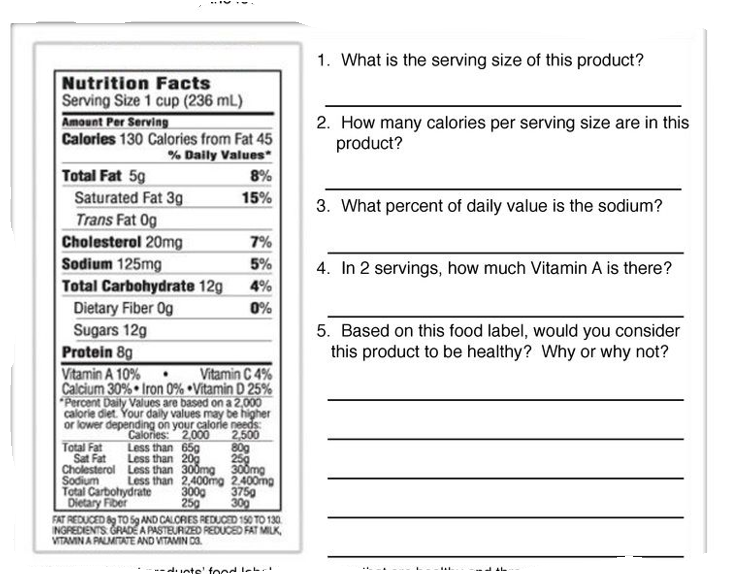




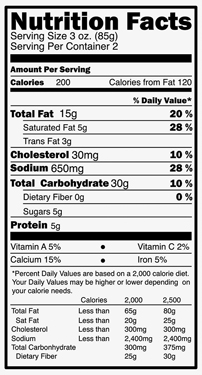
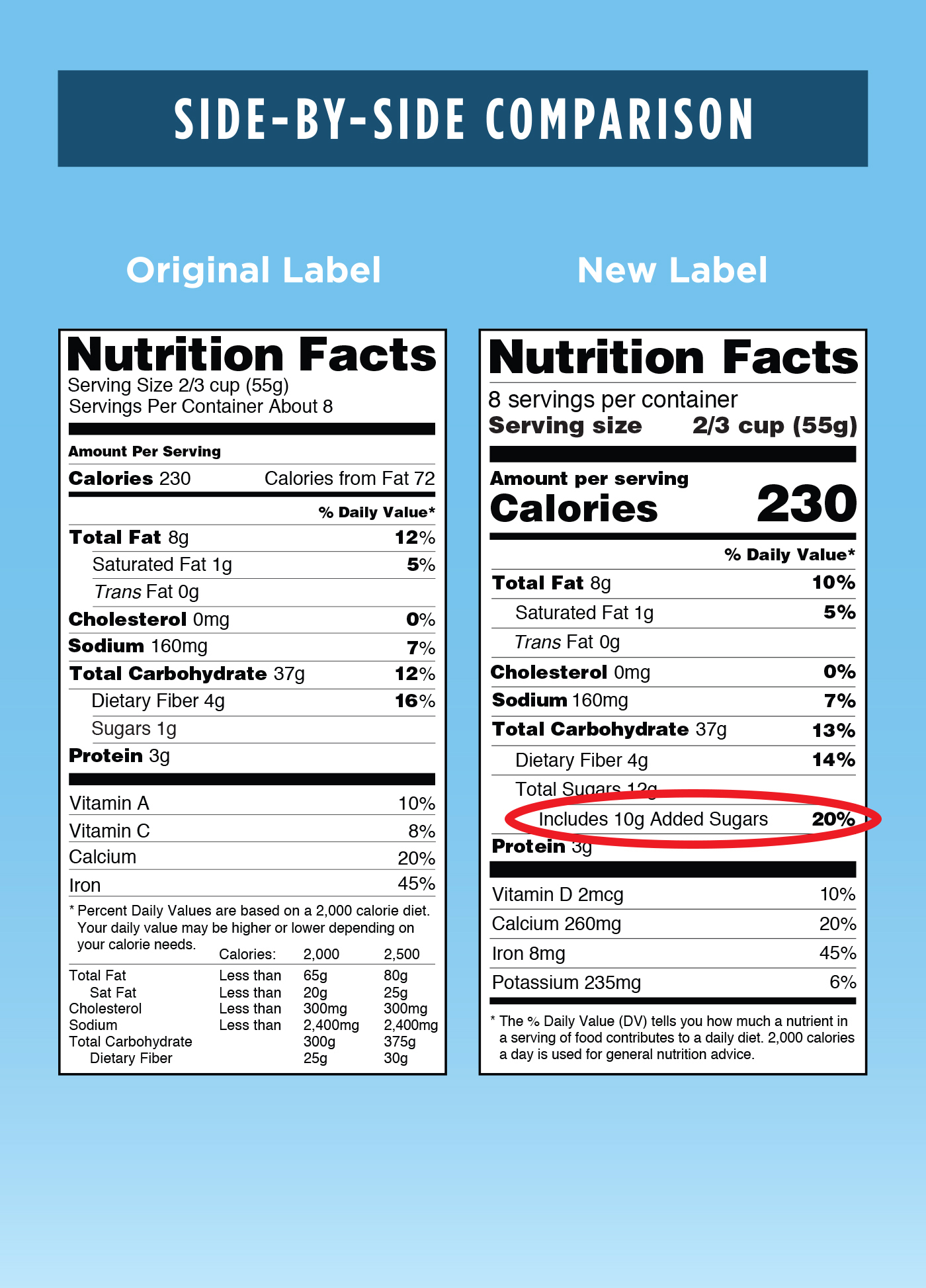


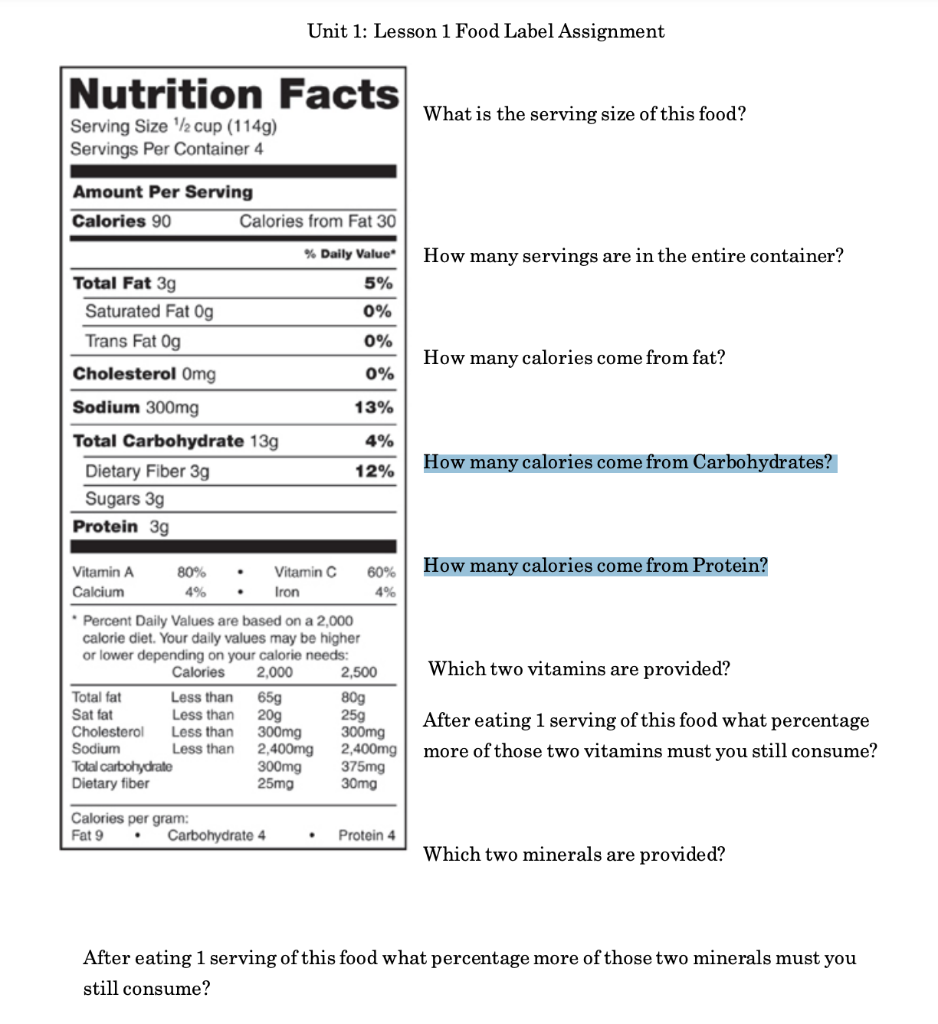
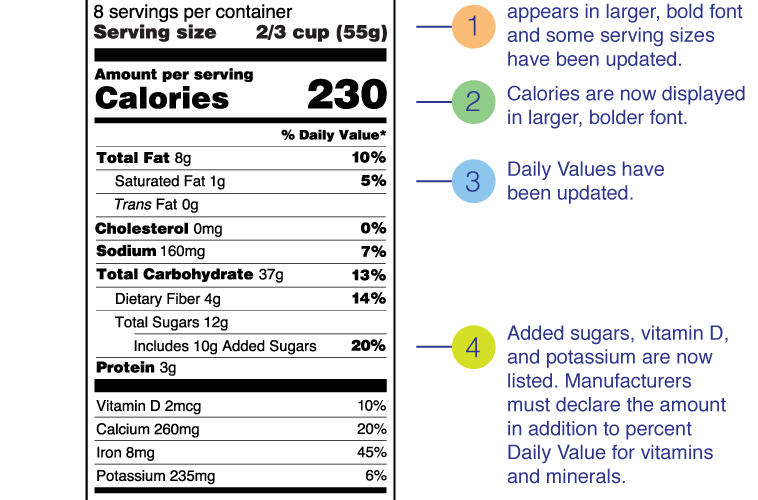
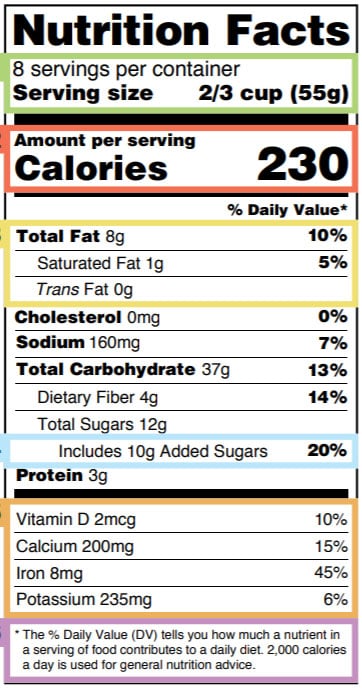
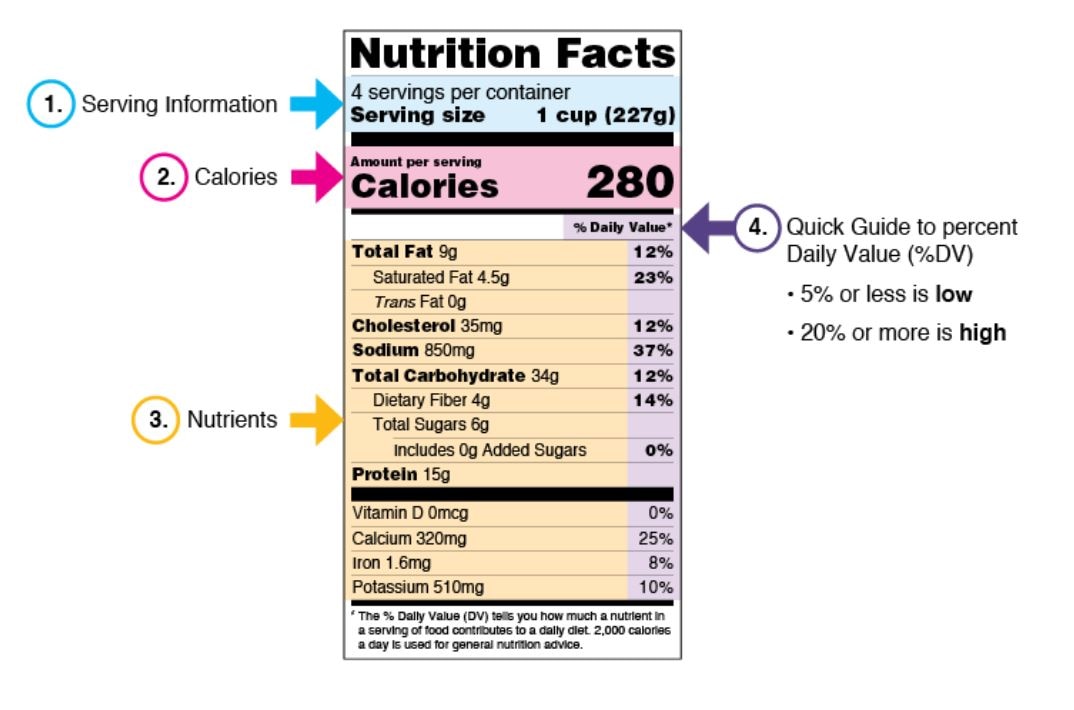
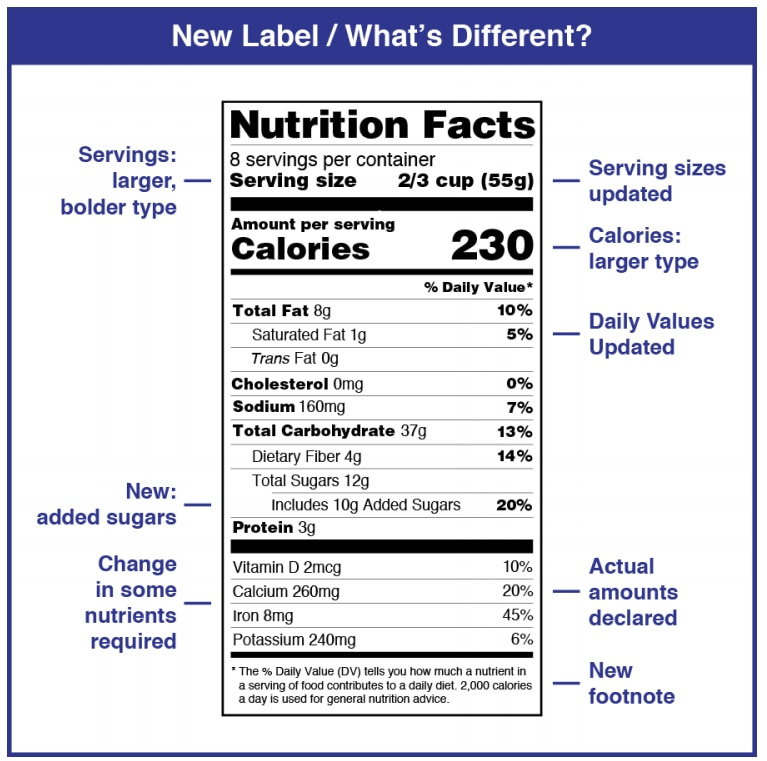


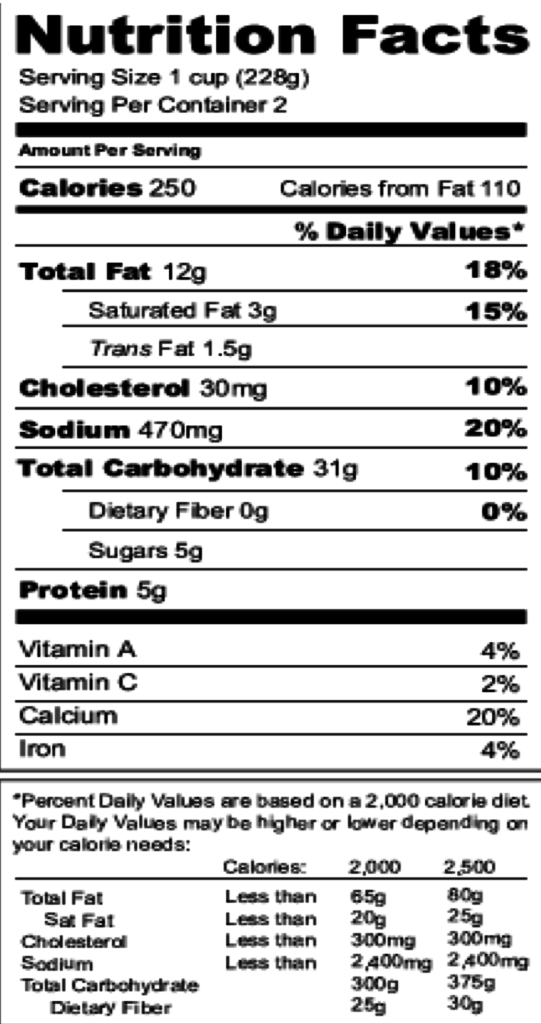
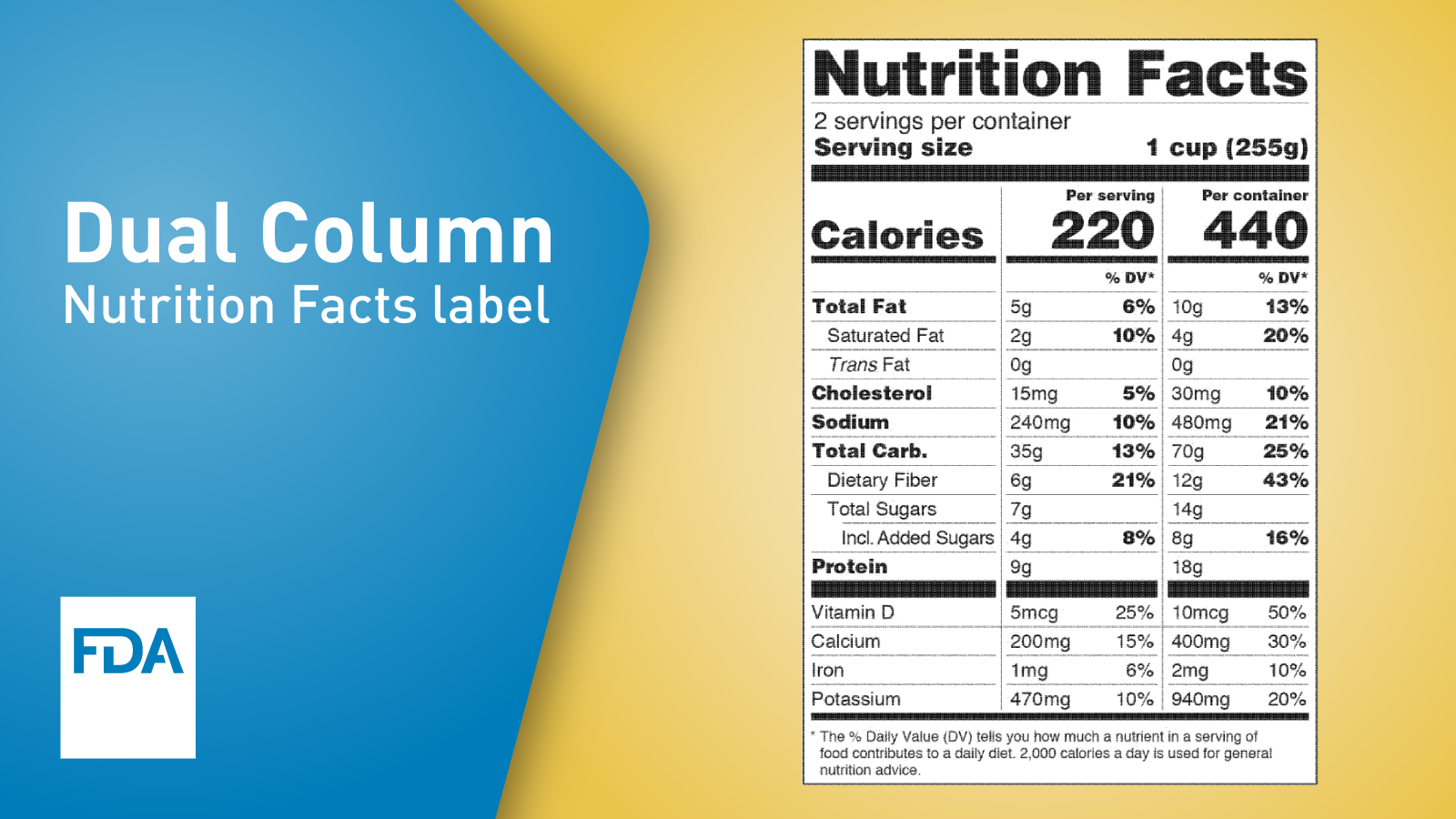




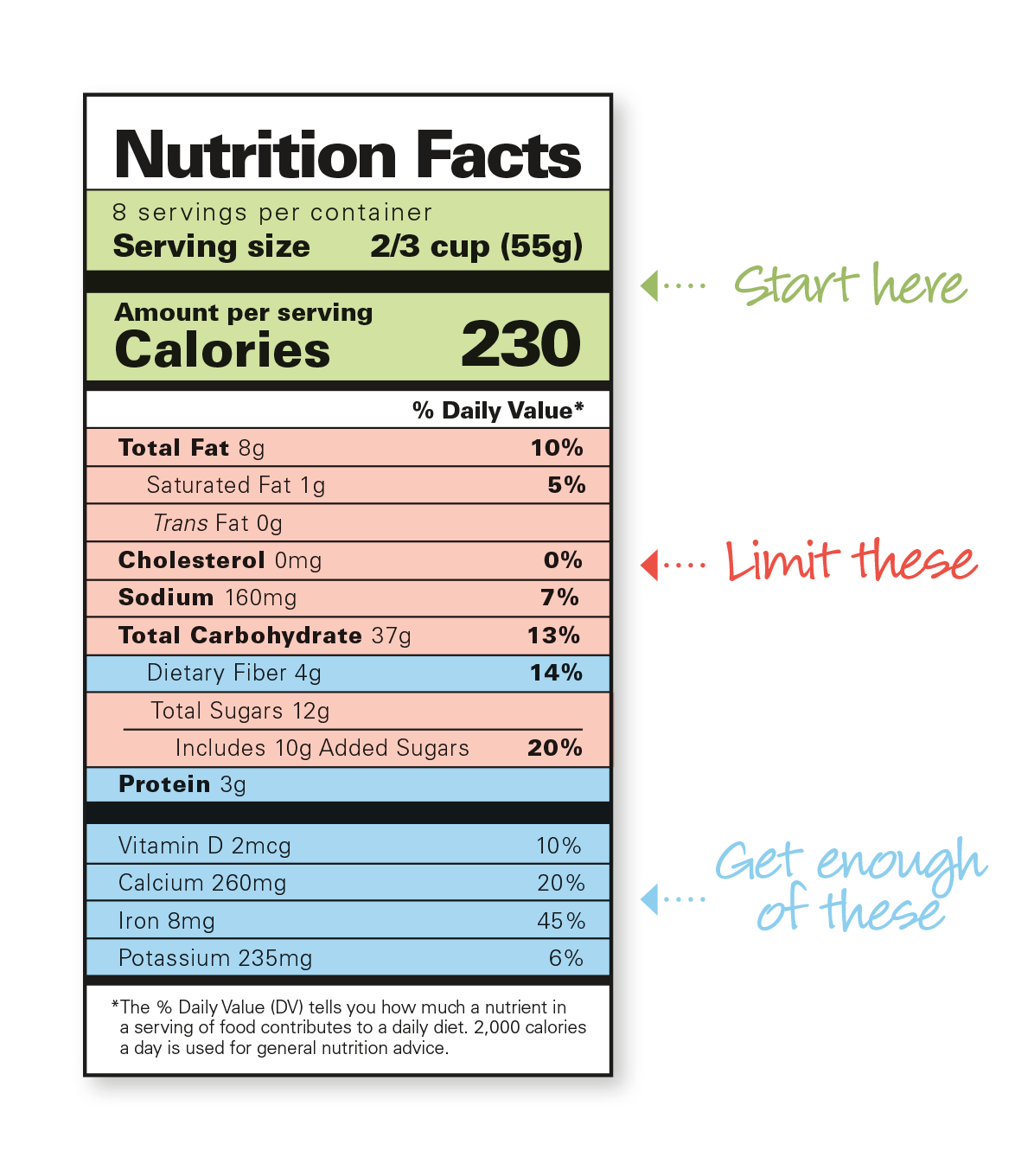



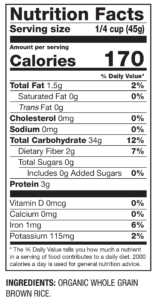
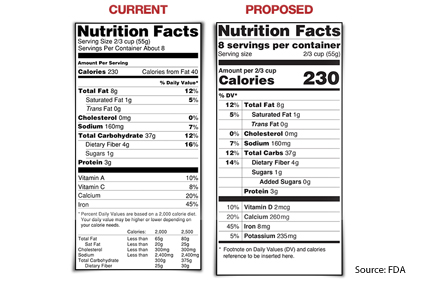


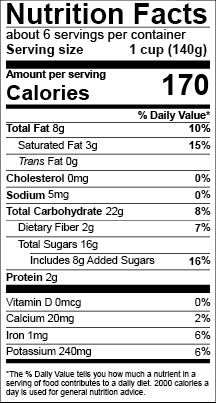
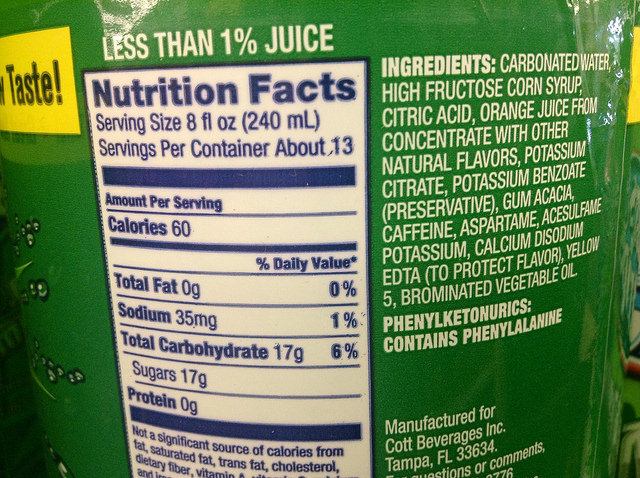

Post a Comment for "38 food labels serving size"